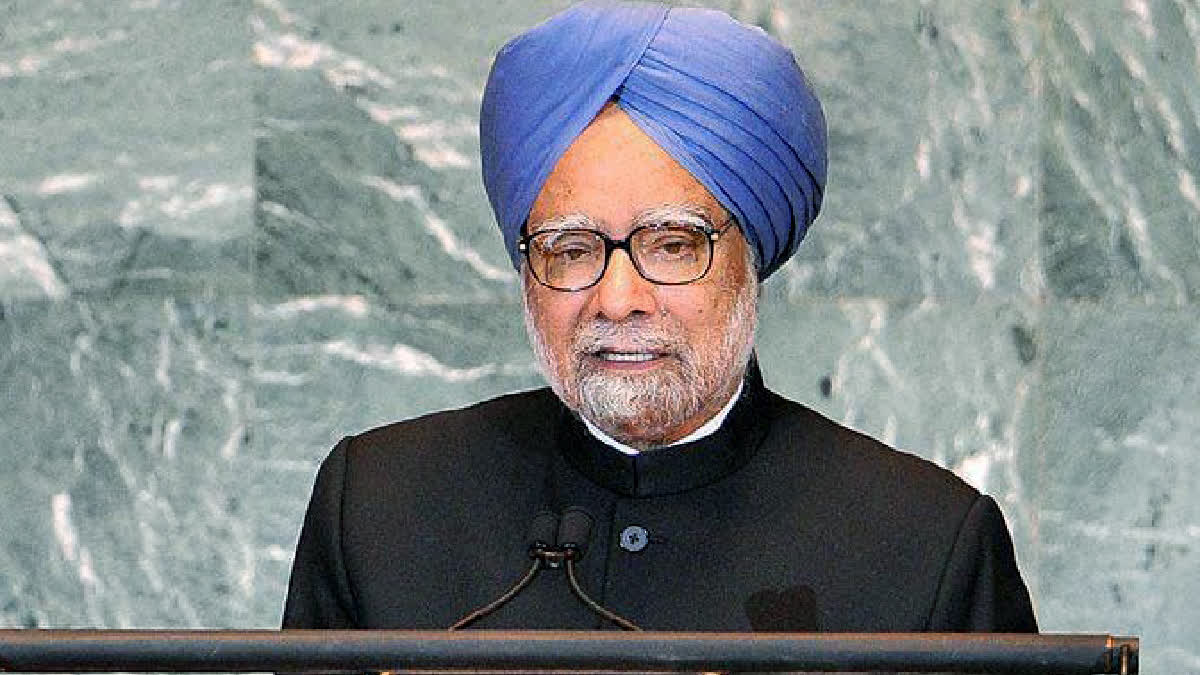New Delhi:The most memorable moment of all my interactions with former Prime Minister Manmohan Singh, who passed away Thursday at the age of 92, will be the flight Air India One from Riyadh to New Delhi way back in 2010. As was the norm those days, the Prime Minister held a press conference on board the flight to talk about the visit to Saudi Arabia. The return of our entourage coincided with the Indian festival of colours Holi. Soon after the press conference, I walked up to him and said, “Happy Holi, Sir.” He placed his right palm on my head and said with his soft voice, “God bless, son.”
That visit to Saudi Arabia was important from New Delhi’s foreign policy perspective. It was during that visit that the ‘Riyadh Declaration – A New Era of Strategic Partnership’ was released. The Riyadh Declaration further cemented India-Saudi Arabia ties building upon the Delhi Declaration that was signed during the then Saudi King Abdullah bin Abdulaziz Al Saud’s visit to India in 2006.
During his visit to Saudi Arabia, Manmohan Singh addressed the Majlis Al-Shoura, and received the Saudi Ministers of Foreign Affairs, Petroleum and Mineral Resources and Commerce and Industry. An honorary doctorate was conferred upon him by King Saud University. Manmohan Singh actually continued the pragmatic foreign policy that was started by PV Narasimha Rao and continued by Bharatiya Janata Party’s Atal Bihari Vajpayee.
Perhaps the most abiding legacy of Manmohan Singh’s foreign policy is the India-US civilian nuclear deal signed in 2005. This landmark deal ended India’s nuclear isolation and facilitated access to nuclear technology and fuel for civilian purposes, enabling energy security and economic growth.
The importance of the role Manmohan Singh played in strengthening India-US is put most aptly by US Secretary of State Anthony Blinken in his condolence message following the demise of the former Prime Minister. “Dr. Singh was one of the greatest champions of the US-India strategic partnership, and his work laid the foundation for much of what our countries have accomplished together in the past two decades,” Blinken stated. “His leadership in advancing the US-India Civil Nuclear Cooperation Agreement signified a major investment in the potential of the US-India relationship. At home, Dr. Singh will be remembered for his economic reforms that spurred India’s rapid economic growth. We mourn Dr. Singh’s passing and will always remember his dedication to bringing the United States and India closer together.”
India’s foreign policy under Manmohan Singh’s prime ministership from 2004 to 2014 was marked by a blend of pragmatism and idealism. It reflected India’s growing stature on the global stage and its aspirations to play a key role in international affairs. Singh’s tenure emphasised economic diplomacy, strategic partnerships, and multilateralism while addressing regional and global challenges.
Singh was a strong advocate of India’s ‘Look East Policy’ that was started in the early 1990s when he was serving as Finance Minister under then Prime Prime Minister Narasimha Rao. The policy focused on deepening economic and strategic ties with the Association of Southeast Asian Nations (ASEAN), Japan and South Korea.
The signing of the India-ASEAN Free Trade Agreement in Goods (2009) was a landmark achievement, boosting bilateral trade. Negotiations for agreements on services and investments culminated in the Comprehensive Economic Cooperation Agreement (CECA) with several ASEAN member states.
